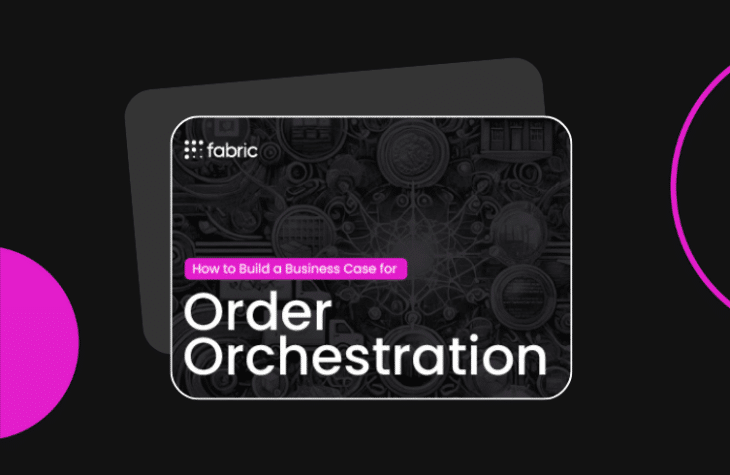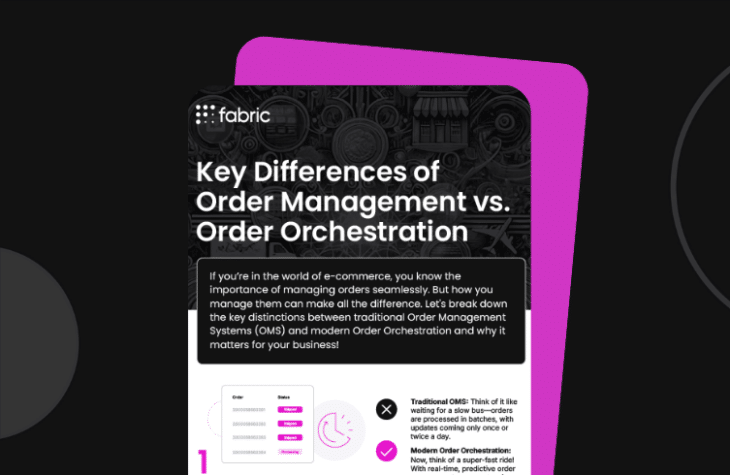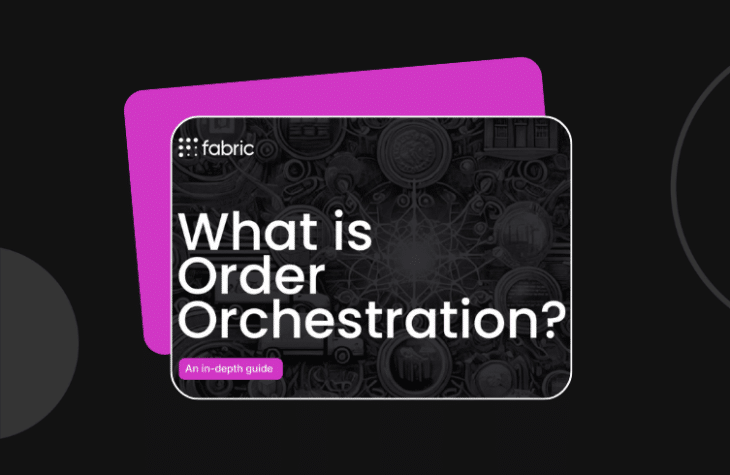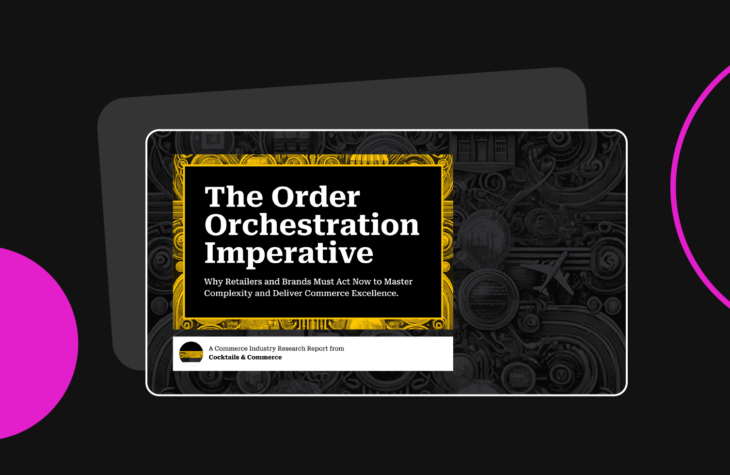The Order Management Checklist for Scaling Brands on Shopify
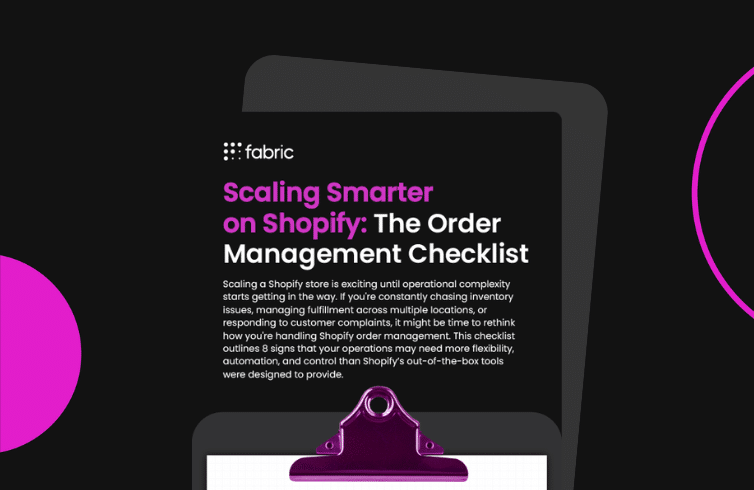
Scaling on Shopify is exciting until complexity starts slowing you down. If you’re hitting limits with visibility, fulfillment flexibility, or operational control, it’s time to take a closer look at your Shopify order management setup.
This infographic outlines eight key signs that your current approach might need to be extended as your brand grows. From inventory issues to fulfillment strain, we break down how fabric OMS gives scaling brands the tools they need to stay in control.
Whether you’re managing multiple channels, increasing order volume, or introducing new fulfillment methods, Shopify order management needs to keep pace. fabric helps you do just that with real-time visibility, intelligent automation, and built-in flexibility.
In this infographic, you’ll learn how to:
- Spot the 8 most common order management challenges scaling brands face on Shopify
- Streamline real-time inventory across all stores, warehouses, and channels
- Reduce manual work with smarter, automated fulfillment decisions
- Handle pre-orders, backorders, and split shipments with greater precision
- Optimize fulfillment with more control at the store and location level
Why it matters for scaling Shopify Plus merchants
If you’re scaling Shopify Plus for high-volume sales, you may be feeling the strain of coordinating fulfillment across more locations, channels, and order types. While Shopify offers some built-in capabilities, many brands need greater configurability and control to manage increasing complexity.
This checklist highlights the key areas where fabric OMS extends Shopify’s functionality, especially when it comes to unified inventory visibility, flexible fulfillment logic, and scalable operations.
Looking for how to extend Shopify functionality without overhauling your stack? This is your first step.
See it in action
Curious how fabric OMS can elevate your Shopify order management and help you scale with confidence? We’ll walk you through how fabric OMS supports your growth, from smarter fulfillment decisions to more agile, omnichannel operations.
5-Step Guide: Build a Business Case for Order Orchestration
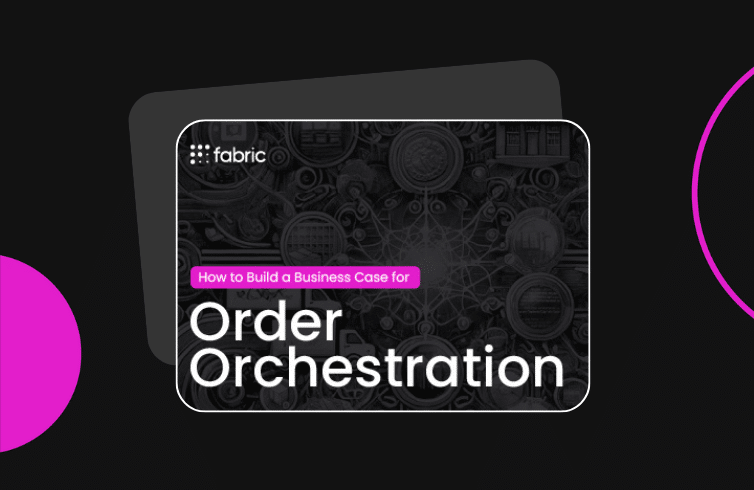
Consumers expect more. More speed, more convenience, and more flexibility across every channel. But let’s be real: most retail fulfillment systems weren’t built to keep up.
Disconnected inventory, slow fulfillment, and inefficient logistics aren’t just operational headaches—they’re revenue killers. If your business is still relying on outdated order management processes, you’re leaving money on the table and frustrating customers who expect seamless experiences.
The missing piece: Order Orchestration
That’s where Order Orchestration comes in. It’s the key to optimizing fulfillment, cutting costs, and delivering the fast, flexible shopping experiences that today’s consumers demand. And to get leadership on board, you need a strong business case.
What’s inside this ebook?
- Why Order Orchestration matters: Learn how it goes beyond traditional order management to drive real business impact.
- The ROI of smarter fulfillment: See how reducing inefficiencies and optimizing logistics directly boosts revenue and margins.
- How to solve retail’s biggest pain points: Find out how to fix challenges such as stockouts, slow shipping, and disconnected systems.
- 5 steps to build your business case: A practical framework to help you make a compelling argument for investment.
Retailers who embrace Order Orchestration don’t just improve efficiency. They unlock new revenue opportunities, increase customer loyalty, and gain the agility needed to stay competitive. If you’re looking for a strategic way to modernize your fulfillment operations, this ebook is your roadmap. Read it in full below.
Take the next step and dig deeper into Order Orchestration
For a deeper dive into the urgency of Order Orchestration, check out “The Order Orchestration Imperative,” a whitepaper by Cocktails & Commerce. It breaks down why retailers need to move fast to overcome order complexity and future-proof their fulfillment strategies.
Order Management vs. Order Orchestration: A Side-by-Side Comparison
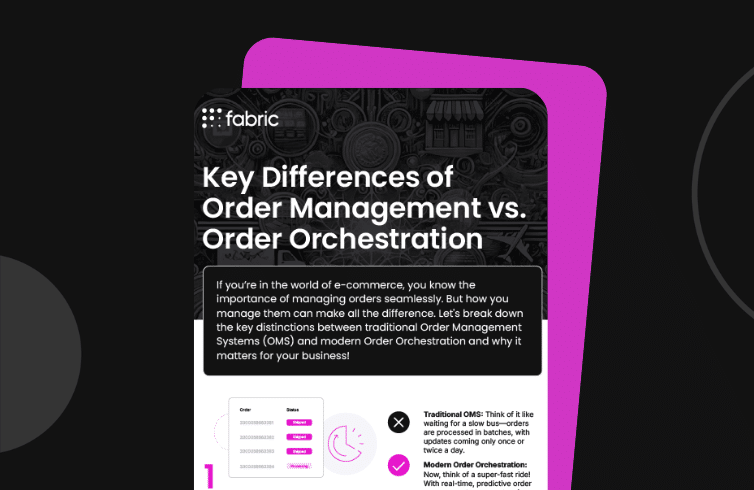
In today’s fast-paced e-commerce environment, how you manage your orders can be the difference between growth and stagnation. Traditional Order Management Systems (OMS) have their place, but they simply can’t keep up with the demands of modern business. The solution? Modern Order Orchestration.
Check out our full infographic to see how modern Order Orchestration stacks up against traditional Order Management and why it matters for your business.
Don’t let outdated systems slow you down
As discussed in our infographic, traditional Order Management Systems are slow, rigid, and expensive to scale. They rely on batch processing and manual interventions, which can create delays in decision-making and order fulfillment. As e-commerce demands continue to rise, businesses need a solution that can keep up. Modern Order Orchestration provides the agility, automation, and scalability needed to meet the challenges of today’s fast-moving market, helping you drive growth while reducing costs.
Why modern Order Orchestration?
- Agility and flexibility: Respond instantly to market shifts with dynamic, AI-powered decision-making.
- Efficiency and automation: Streamline workflows and eliminate manual processes to reduce costs and save time.
- Scalability: Easily scale your order management operations as your business grows—no costly manual interventions required.
- Real-time insights: Get predictive, real-time updates to ensure faster order fulfillment and superior customer experience.
- Seamless integrations: Simplify integrations with modern API-driven solutions, reducing complexity and improving operational efficiency.
Make the shift to Order Orchestration
Modern Order Orchestration isn’t just a nice-to-have. It’s a must-have for businesses looking to stay competitive. It empowers you with the speed, flexibility, and automation needed to thrive in today’s e-commerce landscape.
Ready to elevate your order management strategy? Discover how modern Order Orchestration can transform your operations by downloading “The Order Orchestration Imperative” whitepaper by Cocktails & Commerce. Unlock the full potential of your business today.
Order Orchestration Explained: A Guide to How it Works
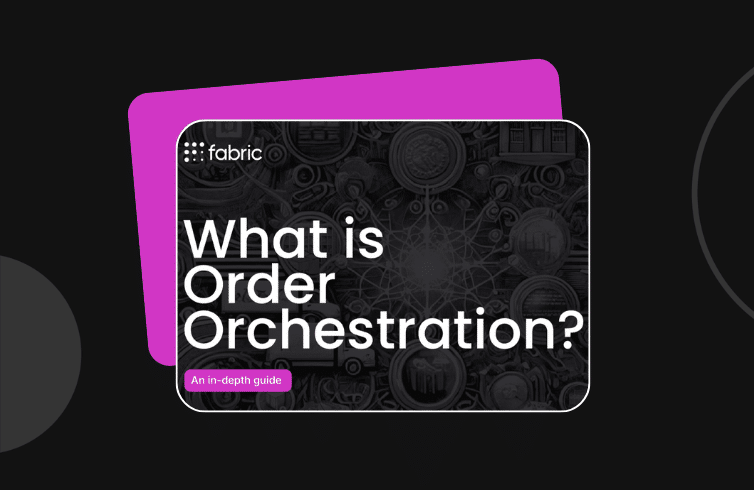
Order Orchestration is the key to smarter, faster, and more efficient fulfillment. It connects inventory, demand, and fulfillment in real-time, ensuring every order is handled seamlessly. No delays, no inefficiencies, just smooth operations and happy customers. This guide gives you a practical understanding of how retailers are using orchestration to stay ahead.
What’s inside this guide
- A clear breakdown of how Order Orchestration works.
- The key technologies behind a modern, scalable system.
- How to reduce costs & improve fulfillment speed.
- Why top retailers are adopting AI, APIs, & automation to stay ahead.
Orchestrate success with the right system
Order Orchestration helps you take control by:
- Syncing inventory in real time: No more guessing what’s in stock.
- Optimizing fulfillment on the fly: Faster, cost-effective deliveries.
- Providing customers with accurate delivery options: No broken promises.
- Automating responses to demand shifts: Scaling when and where you need it.
Ready to master Order Orchestration? Get the full insights in “The Order Orchestration Imperative” whitepaper by Cocktails & Commerce.
The Roadmap to Omnichannel Retail Success

Transform Your Operations and Stay Ahead of the Competition
Ready to launch your retail operations into the future? In this infographic, you will get exclusive insights that reveal how to streamline your processes, boost efficiency, and enhance customer satisfaction—no matter where you’re headed in the retail galaxy.
Set your course for retail success with strategies to:
- Achieve real-time inventory visibility across all locations —giving you a universal view of your stock.
- Optimize order routing for faster fulfillment and lower costs—precisely and quickly navigating the vast retail space.
- Customize your offerings with features like subscriptions, preorders, and easy returns—ensuring a smooth and seamless journey for your customers
Navigate Today’s Retail Challenges with ‘The Order Orchestration Imperative’
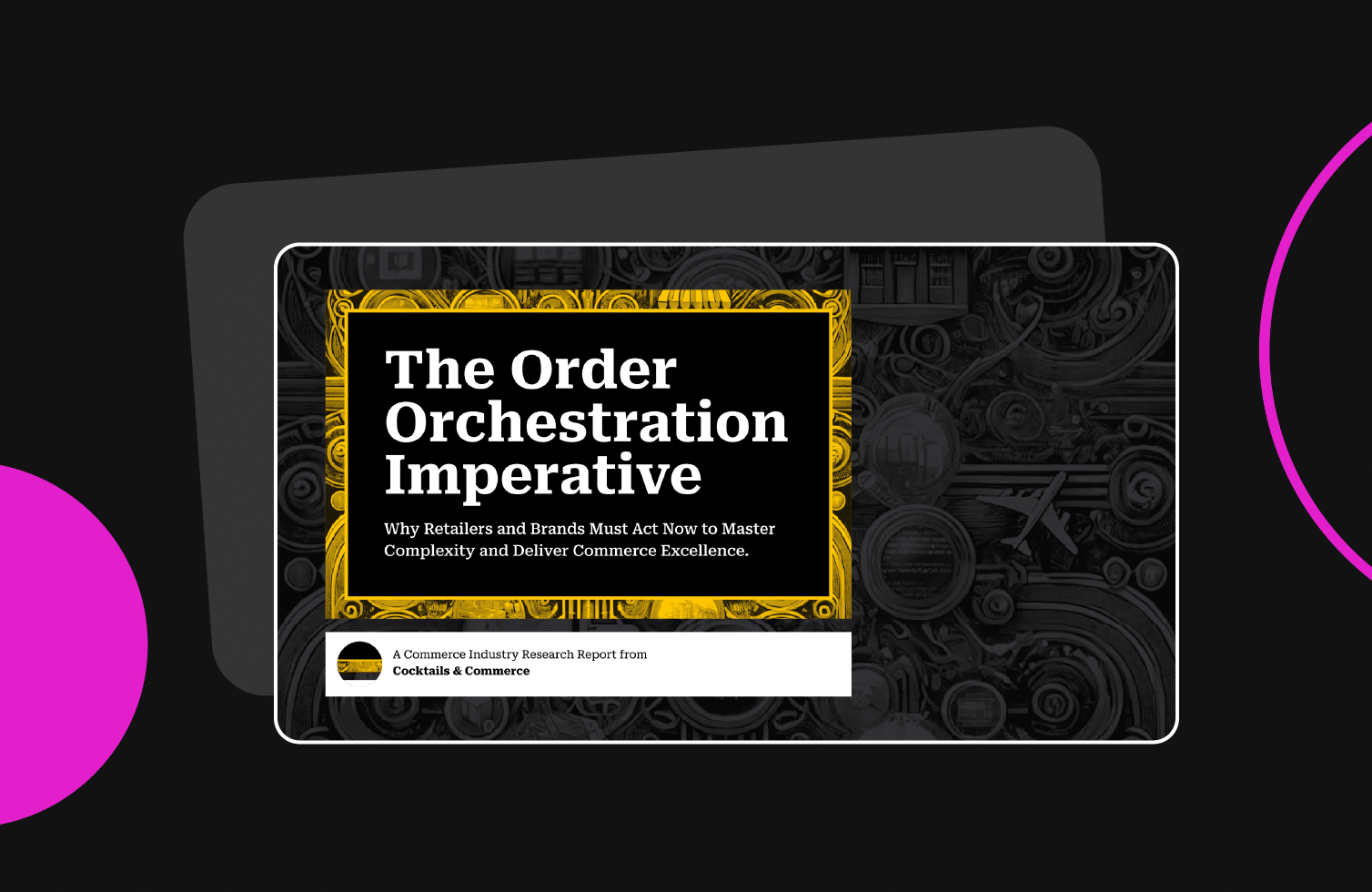
Mastering Complexity to Deliver Commerce Excellence
The retail landscape is evolving at breakneck speed, bringing unprecedented complexity to demand and fulfillment. How can brands and retailers stay ahead of the curve?
In The Order Orchestration Imperative, brought to you by StrategyēM in partnership with fabric, discover actionable insights and proven strategies to navigate the challenges of today’s retail environment. This whitepaper equips you with the tools to simplify complexity, drive scalable growth, and deliver unmatched customer satisfaction.
Inside, you’ll uncover:
- The growing challenges of fragmented demand and fulfillment networks—and the risks of inaction.
- How modern order orchestration delivers real-time visibility, agile fulfillment strategies, and cost savings.
- Expert insights from top retail leaders on optimizing inventory, reducing errors, and meeting customer expectations.
Download your free copy today to learn how to confidently transform your retail operations and position your brand for success!
The Big Book of Retail Success: From Order Management to Omnichannel Excellence
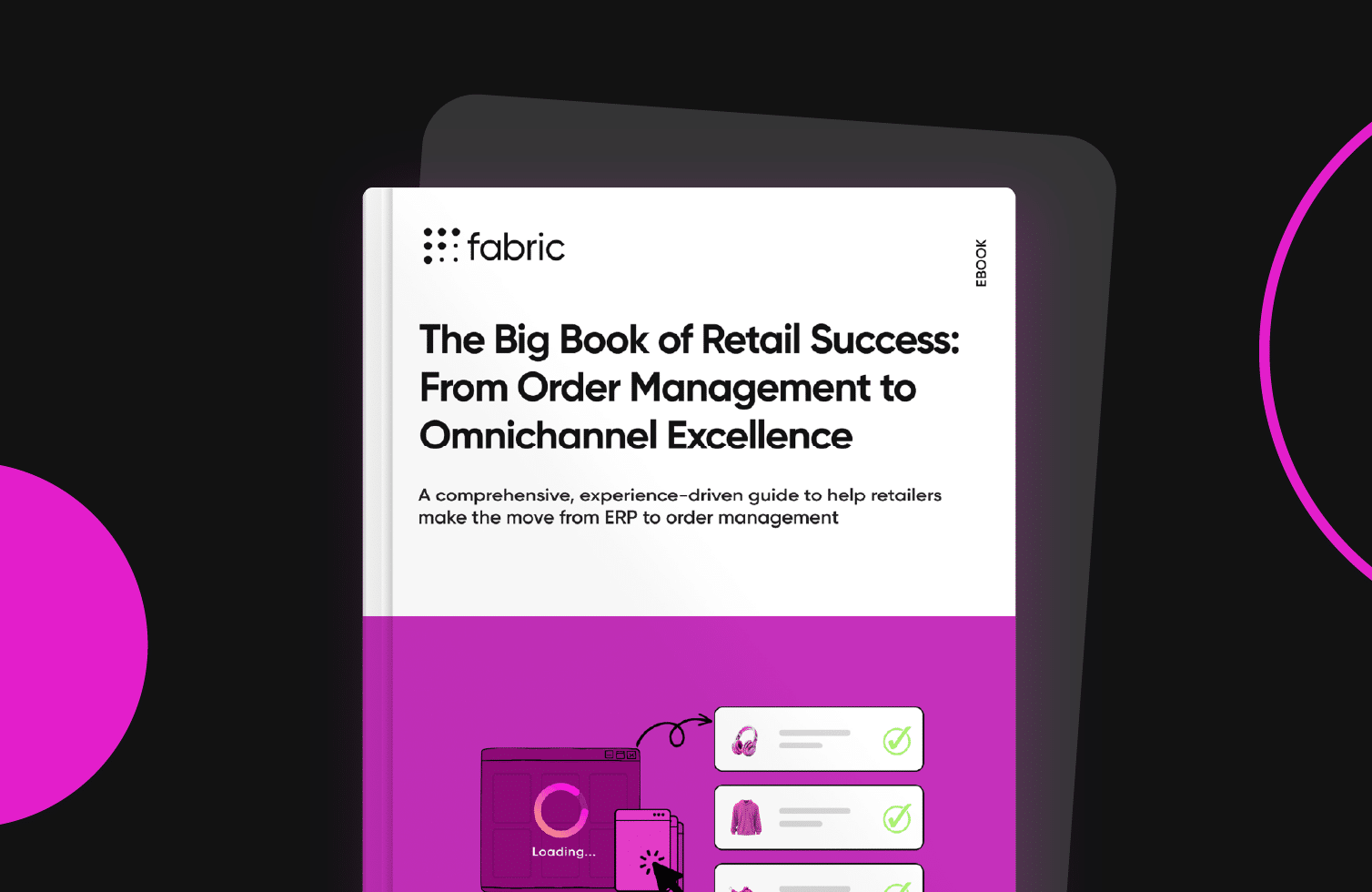
Get the guide to unlock the secrets to successful order management
Get a comprehensive, experience-driven guide to making the move from ERP to order management in fabric’s latest ebook, The Big Book of Retail Success. This comprehensive guide is packed with insights from industry veteran Jay Topper, designed to help you navigate the challenges of modern retail.
In this ebook, you’ll discover:
- Key drivers for modernizing your systems: Learn the critical factors pushing retailers toward a more effective order management solution.
- Proven strategies for success: Explore actionable tips and methods to ensure your retail transformation delivers outstanding results.
- Evaluation tools: Master the art of using scorecards to assess and select the best OMS platforms for your unique needs.
Access your complimentary ebook today and start transforming your retail operations with confidence!
A Modern Solution for Modern Commerce

The modern commerce journey requires more than just yesterday’s ERP, so let AI-powered fabric OMS put you on the right path.
Retail is hard and you need a solution that makes it easy. It starts with an Order Management System (OMS) at the heart of your commerce experience. Because consumers expect speed, convenience and seamless customer service across every channel they shop. But many retailers are still using legacy tools like an ERP and spreadsheets that can’t keep up because:
- ERPs and spreadsheets aren’t built for multiple fulfillment channels
- Batch data updates delay inventory visibility leading to stockouts and a poor customer experience.
- Retailers can’t offer the convenient delivery options customers want like BOPIS and ship from store to get their items fast and efficiently
